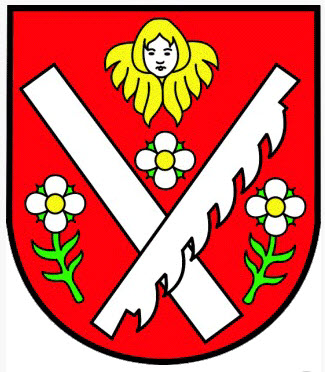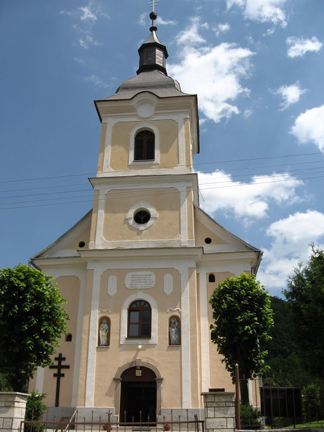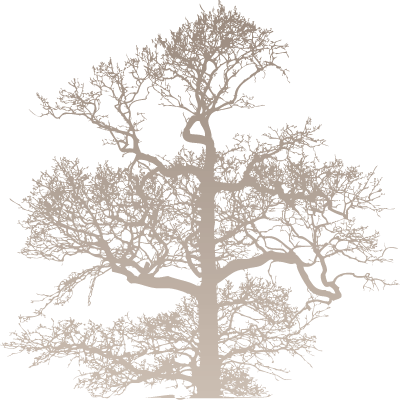
Kojsov is first mentioned in historical documents in 1368. In 1468 it was granted as the possession of Spis Castle. The specific owners were two families, the Zapolskys and the Turzovs. Local history states the village name originated based upon an individual’s name, Kojslav. The village was fortunate as the forests were very bountiful. Residents of Kojsov bred cattle, sheep and also were involved in some form of agriculture. Coal was mined here for local iron quarries. The Kojsov mines offered employment for many in this area. During 1565, mining became so expansive it was recognized as a major mine area. Iron, copper and silver ore were mined and this gave the village a stable economy. Kojsovska Hol’a (hill) as well as the Lukacova Jaskyna cave are in this area. The Kojsov brook flows around the village and the more populated area of Kojsov is located on the left bank of the brook.
The village coat of arms incorporates the motives of a saw, crossbar and an angel as protection against evil. Women in the village were skilled and produced linens, cloth and carpets for sale. The village is surrounded by three districts of the Kosice region. Spisska Nova Ves to the northwest, Roznava in the southwest and Kosice-okolie in the southeast and Presov in the northeast. During the 15th and 16th centuries, Greek Catholic Ruthenians arrived in Kojsov and made up a large number of the population. During the turn of the century, many residents left for America. During World War II villagers assisted partisans fighting in the war and joined them in this struggle. In the 1950’s a collective farm was started. Residents also relocated for work in nearby industrial factories. Today, the village has a large population. An elementary school serves to educate local children. There are various cultural and sports teams located in the village. Kojsov also has its own post office that is open Monday to Friday. Many major upgrades have been performed on the roads, at the cemetery and to buildings that were in need of repair. Today, the village is a popular destination for those mainly from Kosice who have summer vacation homes. There are also many folklore groups in Kojsov, two are Kojsovan and Jedlinka.
Over time there have been varying names for the village:
1773 Kojso, Koischo, Kojskow, 1786 Kojscho, 1808 Koisso, Koischdorf, Koyssow, 1863–1913 Kojsp, 1920 Kojsov, Kolsov, 1927– Kojsov.
Village Size:
Kojsov is located west of Kosice in a hilly area; the total height above sea level varies from 425 to 614 meters.
Population:
As of 2005 the village had 749 inhabitants. In 2011 there was a total population of 736 inhabitants. As of 2011, 711 inhabitants identified as Slovak, 6 as Roma, 1 Czech and 18 unidentified.
Church:
 The Greek Catholic Church of Saints Peter and Paul was started when Father Jan Klembarsky (served the parish from 1720 to 1755) arrived. Initially, the faithful held services in a private home. Later, they utilized the village school which today stands as the village municipal office. In 1732 a wooden church was constructed. In 1755 Father Juraj Tarasovic (1755 to 1771) was assigned as the church pastor. In historical records, he noted no one of the Evangelical (Lutheran) faith resided in the village. In 1771 Father Andrej Ladizinsky was assigned as pastor. He was instrumental in having a bell tower added to the church with a bell “Saint Peter” installed. This bell is in the current church bell tower and is still utilized. In 1799, Father Jan Vislocky (1799 to 1835) was installed as pastor. With the help of Count Czaky, a new stone church was constructed during the years 1806-1809 as the wooden church burned to the ground. This church was formally dedicated as Saint Peter and Paul Greek Catholic Church. Various priests served Saints Peter and Paul, some were Stefan Bistey (1835-1856), Jan Gerbery (1856-1857), Juraj Toth (1857-1896) and Viktor Keukanic (1896). During this period there were 1,250 Greek Catholic churches within this district. Some of the parishes in the same diocese as Kojsov were Velky Folkmar, Jaklovce, Margecany, Gelnica, Zakarovce, Kosicka Belka and Vysny and Nizny Klatov.
The Greek Catholic Church of Saints Peter and Paul was started when Father Jan Klembarsky (served the parish from 1720 to 1755) arrived. Initially, the faithful held services in a private home. Later, they utilized the village school which today stands as the village municipal office. In 1732 a wooden church was constructed. In 1755 Father Juraj Tarasovic (1755 to 1771) was assigned as the church pastor. In historical records, he noted no one of the Evangelical (Lutheran) faith resided in the village. In 1771 Father Andrej Ladizinsky was assigned as pastor. He was instrumental in having a bell tower added to the church with a bell “Saint Peter” installed. This bell is in the current church bell tower and is still utilized. In 1799, Father Jan Vislocky (1799 to 1835) was installed as pastor. With the help of Count Czaky, a new stone church was constructed during the years 1806-1809 as the wooden church burned to the ground. This church was formally dedicated as Saint Peter and Paul Greek Catholic Church. Various priests served Saints Peter and Paul, some were Stefan Bistey (1835-1856), Jan Gerbery (1856-1857), Juraj Toth (1857-1896) and Viktor Keukanic (1896). During this period there were 1,250 Greek Catholic churches within this district. Some of the parishes in the same diocese as Kojsov were Velky Folkmar, Jaklovce, Margecany, Gelnica, Zakarovce, Kosicka Belka and Vysny and Nizny Klatov.
The church altar was the work of artist Jozef Miklosik. The exterior of the church is painted in a light color with white boarders. Beneath the one cupola, a painted clock is seen. At the main entrance door murals of Saints Peter and Paul are located on the left and right side. Interior colors of the church are yellow, green and gold. The altar area has a limited iconostasis that is one main tier with a small tier top boarder. To the left there is a green and gold walk up pulpit. Two side altars, both of the Virgin Mary and child Jesus, are on each side of the main altar area. A mural of the Holy Trinity is located above the altar baldachino. Two chandeliers are located in the church. Two murals of the Heart of Jesus with thorns (the symbol for the Sacred Heart of Jesus Christ’s passion) are found on each side of the semi-circle before the altar. As of 2011 464 inhabitants identified as Greek Catholic and 171 as Roman Catholic.
Prominent Persons:
Juraj Jakubisko: Mr. Jakubisko was born April 30, 1938 in the village. He has directed 15 feature films and is also a cinematographer and screenplay writer. In 2000, he was named Best Slovak Director of the 20th century by film critics and journalists. He also was awarded the Golden Seal in Belgrade for his contribution to world cinema.
Father Ladislav Hucko, Sr.: Father Hucko was born in February 2, 1912 in the village. He was a Greek Catholic priest, high school teacher and the first editor-in-chief of “Slovo”, the official magazine of the Greek Catholic Church in Slovakia. The Magazine is still published today. He died February 2, 1975 in Presov.



